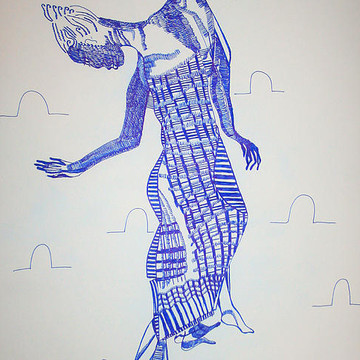Looking for design inspiration? Browse our curated collections!
Joined
2009
Followers
380
Visitors
1,483,012

Adowa Dance - Ghana
Dance is the life of the African. It permeates all their social and ceremonial activities. To the African, dance is a way of thinking, living and communicating. It forms an integral part of all vital facets of the life cycle. We dance during childbirth, naming ceremonies, pubety rites, marriage, religious ceremonies, festivals etc.dance teaches customs and history.Dr Kwame Nkrumah brought Africans together through dance. The Adowa dance is the most widespread and most frequently performed social musical type of the Akan speaking people of Ghana. The dance originated through the movements made by the antelope, hence the name given to it. The story behind the dance states that, there was a once a queen mother in Ashanti called Abrewa Tutuwa. She suddenly fell ill in the cause of her reign. The Obosom (gods) was consulted and a request for a live antelope was to be used for the sacrificial rites. It was alleged that, the asafo companies were promptly detailed to the forest to look for the animal. On coming back, the people saw to their amazement the antelope jumping and making very strange movements. The people in an attempt to imitate the movement of the animal as a sign of celebrating the queen mother�s health started the Adowa dance. The dance was hence started by the Asafo companies. Since the animal was sacrifice for the queenmother, the musical type soon was taken over by the elderly women making the dance becoming women�s performance in several Akan communities. The few men that are seen basically handles the musical instruments.Adowa in present day content can be located in Ashanti, Brong Ahafo, Kwahu, Akim, and some parts of Akim Abuakwa and among the coastal Akans-Fantes where it is known as Adzewa (Adewa). This form is lighter in character as only rattles �torowa and a single drum usually called apentemma are used. A similar type among the Ashanti�s called mpreh or atona is also performed. Adowa is largely performed during funerals, yearly festivals, durbar of chiefs, visit of international dignitaries etc, and is usually led by a female known as Adowahemma. Musical instruments such as Dawuro, Nnawuto, Akuakua, Agyegyewa, Apentemma and Asafotwene were the first instruments used by the Asafo companies.Atumpan and Dondo were later added and the smaller drums replaced by the petia and apentemma. A standard Adowa ensemble now has Adawura (2 boat or slit bell), Torowa (rattle), Petia (supporting drum), Apentemma, Dondo and Atumpan. Repertoires such as Adowatine, Sesre bedi, Abubru din din etc are played in any performance in Ashanti. The songs relate to several issues concerning the Akan cultural history. Themes such as Historical facts which is usually about their past ancestors, chiefs and elders. Songs are also based on topical issues, cultural and social beliefs and practices are all touched in Adowa songs.Adowa songs are usually performed in cantor and chorus form with two or more soloist introducing a song before the chorus comes in. The dance has an economic significance to the people, in that the costumes such as kente are hand woven by the people. The regalia or ornaments such as anklets, golden rings and earrings etc are produced by the goldsmith. The drums and other instruments used are from the woodcarver and the blacksmith respectively. This keeps the people in of the community in business and provide livelihood for them. The culture of the people is also preserved through the dance.